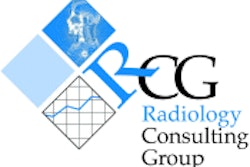Integrating the report-based RIS with the image-based PACS has long been a goal of radiology administrators. Often, however, promises of faster workflow and higher productivity have been a Siren's song, luring would-be systems integrators to invest in products that can't communicate. Fortunately, a pair of presentations at last week's RSNA meeting offered a more certain path to success.
Maurits Ros and his team from the University Hospital’s Academic Medical Center at the University of Amsterdam in the Netherlands faced complications aplenty in their efforts to achieve system integration. Approximately 200 information systems existed in the hospital, and physicians were required to access a minimum of 10 different information sources each day.
Rather than try to retool system integration from the infrastructure on up, Ros’ group decided to work from the presentation layer. They came up with a platform dubbed Zouga, which considered the existing systems, predominately data combined with some business logic, as providers of services. Using this logic, the integration application serves up information to the client side via platform-independent languages such as HTML, XML, Java, and WAP (wireless application protocol).
This architecture gave the team a mechanism to build client applications that offer the functionality of multiple information systems. The group has connected approximately 1,000 clinicians to the Zouga platform, and has integrated more than 10 information systems. According to Ros, the radiology department has four different information systems providing services to the platform.
As the system has matured, Ros’ team has begun to look into developing some additional capabilities.
"The architecture is at the presentation layer, thus it has no capabilities for data storage. However, in terms of the electronic patient record, it’s not an application -- it’s an integration architecture," he said.
Dr. Barton Branstetter IV and the staff of the department of radiology informatics at the University of Pittsburgh Medical Center did not face the same smorgasbord of information systems as their colleagues in the Netherlands. They had only one task: to achieve demographic information association across a disparate, multiprotocol enterprise.
The team developed a platform-independent toolkit, the enterprise radiology assessment and protocol tools (ENRAPT), to solve the institution’s integration issues. At the heart of ENRAPT is a centralized database for radiologic patient information. The database is HL7 enabled and has connections to the hospital’s HIS and RIS.
Owing to its HL7 interfacing capabilities with the HIS and RIS, ENRAPT allows technologists to get DICOM modality worklists for patients. In addition, radiologists can access specialty-specific study protocol lists through a protocol library the team developed.
The protocol library is a compendium of standardized radiologic techniques that the department has compiled and placed into the ENRAPT system. This library provides standardized operational methodology across multiple hospitals and is a teaching aid for newly hired technologists, residents, and faculty.
Radiologists can add new protocol studies to the library, and have full access to patient data via HL7 interface, including prior radiologic images and reports as well as the complete electronic medical record via the HIS. The ENRAPT developers achieved this level of system transparency by coding user-specific Java interfaces for radiologists, nurses, and technologists.
Each one of these user groups is able to access the software via existing PCs in their work areas via a Web-based thin client. Depending on the defined user-level access, ENRAPT delivers both clinical and radiologic patient information to each workstation via a browser-like interface.
"The system has enabled our radiology department to become completely paperless, improved the workflow efficiency for our radiologists and technologists, and allowed our nurses to send data across multiple hospitals. Although ENRAPT is coded specifically to address integration at our hospitals, I believe a Web-based architecture could be successfully transferred to other institutions," said Branstetter.
By Jonathan S. BatchelorAuntMinnie.com staff writer
December 7, 2001
Related Reading
Stop me if you’ve heard this one about PACS, November 29, 2001
Integration, security star in PACS exhibits, November 25, 2001
IHE looks for more participation by HIS vendors, other specialties, February 6, 2001
Copyright © 2001 AuntMinnie.com



















